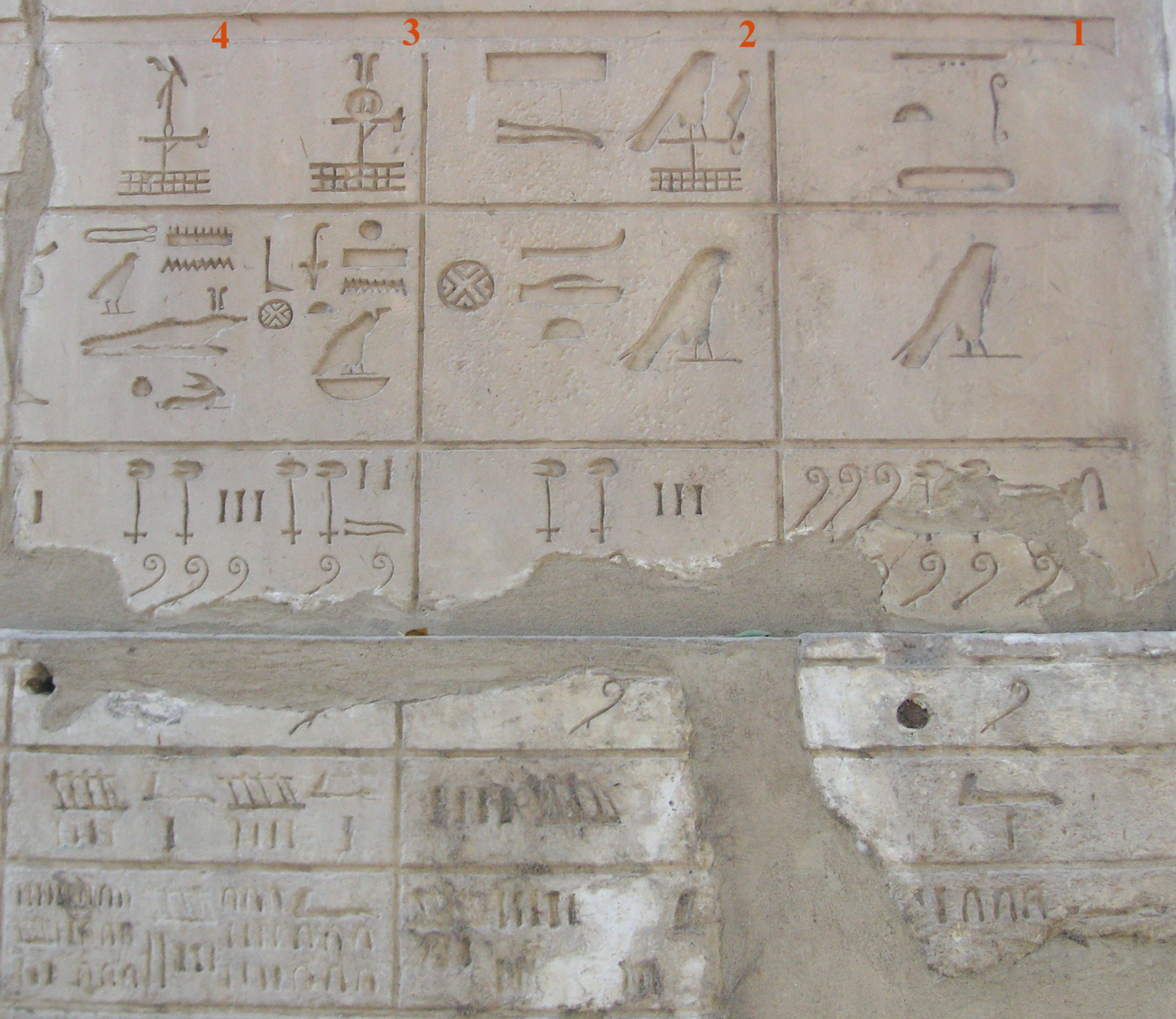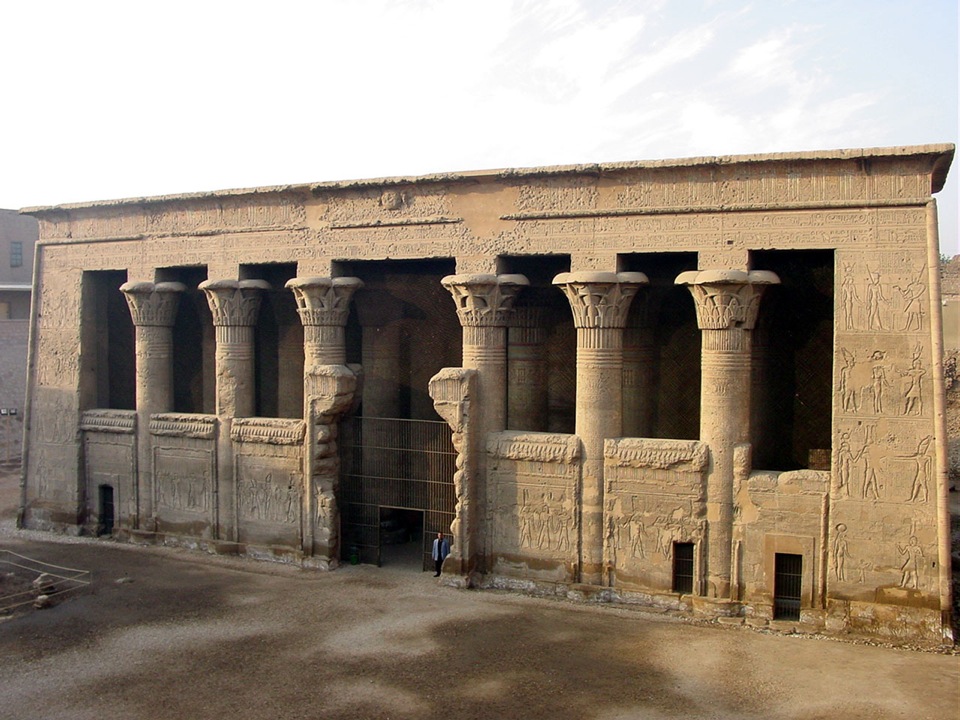|
Nekhen (nome)
Nekhen was the name of the third Upper Egyptian nome (province). Nekhen is also the Egyptian name of Hierakonpolis, one of the main towns in the province. During the Ptolemaic Greek and Roman eras, the province was called Latopolites, for Esna was in this period the main town and its Greek name was ''Latopolis'' or ''Letopolis''. The main towns in the province were Nekhen, Elkab and Esna. The province is already mentioned in inscriptions of the Old Kingdom In ancient Egyptian history, the Old Kingdom is the period spanning c. 2700–2200 BC. It is also known as the "Age of the Pyramids" or the "Age of the Pyramid Builders", as it encompasses the reigns of the great pyramid-builders of the Fourth ....Farouk Gomaa, ''Die Besiedlung Ägyptens während des Mittleren Reiches, 1. Oberägypten und das Fayyum'', Reichert, Wiesbaden 1986, , p. 51-88 References {{DEFAULTSORT:Nekhen Nomes of ancient Egypt ... [...More Info...] [...Related Items...] OR: [Wikipedia] [Google] [Baidu] |
Upper Egypt
Upper Egypt ( ar, صعيد مصر ', shortened to , , locally: ; ) is the southern portion of Egypt and is composed of the lands on both sides of the Nile that extend upriver from Lower Egypt in the north to Nubia in the south. In ancient Egypt, Upper Egypt was known as ''tꜣ šmꜣw'', literally "the Land of Reeds" or "the Sedgeland". It is believed to have been united by the rulers of the supposed Thinite Confederacy who absorbed their rival city states during the Naqada III period (c. 3200–3000 BC), and its subsequent unification with Lower Egypt ushered in the Early Dynastic period. Upper and Lower Egypt became intertwined in the symbolism of pharaonic sovereignty such as the Pschent double crown. Upper Egypt remained as a historical region even after the classical period. Geography Upper Egypt is between the Cataracts of the Nile beyond modern-day Aswan, downriver (northward) to the area of El-Ayait, which places modern-day Cairo in Lower Egypt. The northern (d ... [...More Info...] [...Related Items...] OR: [Wikipedia] [Google] [Baidu] |
Nome (Egypt)
A nome (, from grc, νομός, ''nomós'', "district") was a territorial division in ancient Egypt. Each nome was ruled by a nomarch ( egy, ḥrj tp ꜥꜣ Great Chief). The number of nomes changed through the various periods of the history of ancient Egypt. Etymology The term ''nome'' comes from Ancient Greek νομός, ''nomós'', meaning "district"; the Ancient Egyptian term was ''sepat'' or ''spAt''. Today's use of the Ancient Greek rather than the Ancient Egyptian term came about during the Ptolemaic period, when the use of Greek was widespread in Egypt. The availability of Greek records on Egypt influenced the adoption of Greek terms by later historians. History Dynastic Egypt The division of ancient Egypt into nomes can be traced back to prehistoric Egypt (before 3100 BC). These nomes originally existed as autonomous city-states, but later began to unify. According to ancient tradition, the ruler Menes completed the final unification. Not only did the divi ... [...More Info...] [...Related Items...] OR: [Wikipedia] [Google] [Baidu] |
Hierakonpolis
Nekhen ( egy, nḫn, ); in grc, Ἱεράκων πόλις Hierakonpolis ( either: City of the Hawk, or City of the Falcon, a reference to Horus or ''Hierakōn polis'' "Hawk City" in arz, الكوم الأحمر, el-Kōm el-Aḥmar, lit=the Red Mound) was the religious and political capital of Upper Egypt at the end of prehistoric Egypt ( 3200–3100 BC) and probably also during the Early Dynastic Period ( 3100–2686 BC). The oldest known tomb with painted decoration, a mural on its plaster walls, is located in Nekhen and is thought to date to c. 3500–3200 BC. It shares distinctive imagery with artifacts from the Gerzeh culture.Oldest known zoological collection was also found in the area. Horus cult center Nekhen was the center of the cult of a hawk deity, Horus of Nekhen, which raised one of the most ancient Egyptian temples in this city. It retained its importance as the cultic center for this divine patron of the kings long after the site had otherwise declined. ... [...More Info...] [...Related Items...] OR: [Wikipedia] [Google] [Baidu] |
Egypt (Roman Province)
, conventional_long_name = Roman Egypt , common_name = Egypt , subdivision = Roman province, Province , nation = the Roman Empire , era = Late antiquity , capital = Alexandria , title_leader = Praefectus Augustalis , image_map = Roman Empire - Aegyptus (125 AD).svg , image_map_caption = Province of Aegyptus in AD 125 , year_start = 30 BC , event_start = Conquest of Ptolemaic Kingdom , event1 = Formation of the Diocese of Egypt, Diocese , date_event1 = 390 , year_end = 641 , event_end = Muslim conquest of Egypt, Muslim conquest , life_span = 30 BC – 641 AD , stat_year1 = 1st century AD , stat_pop1 = . , today = Egypt , p1 = Ptolemaic Kingdom , flag_p1 = Ptolemaic-Empire 200bc.jpg , s1 = Sasanian Egypt , flag_s1 = Derafsh Kaviani flag of the late Sassanid Empire.svg , s2 = Rashidun Caliphate , flag_s2 = Mohammad adil-Rashidun-empire-at-its-peak-close.PNG , demon ... [...More Info...] [...Related Items...] OR: [Wikipedia] [Google] [Baidu] |
Esna
Esna ( ar, إسنا , egy, jwny.t or ; cop, or ''Snē'' from ''tꜣ-snt''; grc-koi, Λατόπολις ''Latópolis'' or (''Pólis Látōn'') or (''Lattōn''); Latin: ''Lato''), is a city of Egypt. It is located on the west bank of the Nile some south of Luxor. The town was formerly part of the modern Qena Governorate, but as of 9 December 2009, it was incorporated into the new Luxor Governorate. Latopolis This city of Latopolis (πόλις Λάτων) in the Thebaid of Upper Egypt should not be confused with the more northerly city of Letopolis (Λητοῦς Πόλις), ancient Khem, modern Ausim, in the Nile Delta in Lower Egypt. Ancient city The name "Latopolis" is in honor of the Nile perch, ''Lates niloticus'', the largest of the 52 species which inhabit the Nile, which was abundant in these stretches of the river in ancient times, and which appears in sculptures, among the symbols of the goddess Neith, associated by the ancient Greeks as Pall ... [...More Info...] [...Related Items...] OR: [Wikipedia] [Google] [Baidu] |
Nekhen
Nekhen ( egy, nḫn, ); in grc, Ἱεράκων πόλις Hierakonpolis ( either: City of the Hawk, or City of the Falcon, a reference to Horus or ''Hierakōn polis'' "Hawk City" in arz, الكوم الأحمر, el-Kōm el-Aḥmar, lit=the Red Mound) was the religious and political capital of Upper Egypt at the end of prehistoric Egypt ( 3200–3100 BC) and probably also during the Early Dynastic Period ( 3100–2686 BC). The oldest known tomb with painted decoration, a mural on its plaster walls, is located in Nekhen and is thought to date to c. 3500–3200 BC. It shares distinctive imagery with artifacts from the Gerzeh culture.Oldest known zoological collection was also found in the area. Horus cult center Nekhen was the center of the cult of a hawk deity, Horus of Nekhen, which raised one of the most ancient Egyptian temples in this city. It retained its importance as the cultic center for this divine patron of the kings long after the site had otherwise declined. ... [...More Info...] [...Related Items...] OR: [Wikipedia] [Google] [Baidu] |
Elkab
Elkab, also spelled El-Kab or El Kab, is an Upper Egyptian site on the east bank of the Nile at the mouth of the Wadi Hillal about south of Luxor (ancient Thebes, Egypt, Thebes). Elkab was called Nekheb in the Egyptian language ( , Late Coptic: ), a name that refers to Nekhbet, the goddess depicted as a white vulture.Limme, Luc. "Elkab, 1937–2007: Seventy Years of Belgian Archaeological Research." British Museum Studies in Ancient Egypt and Sudan (2008): 15-50. The British Museum. Web. 24 Oct. 2012. . In Greek it was called Eileithyias polis, "city of the goddess Eileithyia". Elkab consists of prehistoric Egypt, prehistoric and ancient Egyptian settlements, rock-cut tombs of the early Eighteenth Dynasty of Egypt, Eighteenth Dynasty (1550–1295 BC), remains of temples dating from the Early Dynastic Period (Egypt), Early Dynastic period (3100–2686 BC) to the Ptolemaic Kingdom (332–30 BC), as well as part of the walls of a Coptic monasticism, Coptic monastery. This site was ... [...More Info...] [...Related Items...] OR: [Wikipedia] [Google] [Baidu] |
Old Kingdom Of Egypt
In ancient Egyptian history, the Old Kingdom is the period spanning c. 2700–2200 BC. It is also known as the "Age of the Pyramids" or the "Age of the Pyramid Builders", as it encompasses the reigns of the great pyramid-builders of the Fourth Dynasty, such as King Sneferu, who perfected the art of pyramid-building, and the kings Khufu, Khafre and Menkaure, who constructed the pyramids at Giza. Egypt attained its first sustained peak of civilization during the Old Kingdom, the first of three so-called "Kingdom" periods (followed by the Middle Kingdom and New Kingdom), which mark the high points of civilization in the lower Nile Valley. The concept of an "Old Kingdom" as one of three "golden ages" was coined in 1845 by the German Egyptologist Baron von Bunsen, and its definition would evolve significantly throughout the 19th and the 20th centuries. Not only was the last king of the Early Dynastic Period related to the first two kings of the Old Kingdom, but the "capital" ... [...More Info...] [...Related Items...] OR: [Wikipedia] [Google] [Baidu] |


.jpg)
.jpg)

